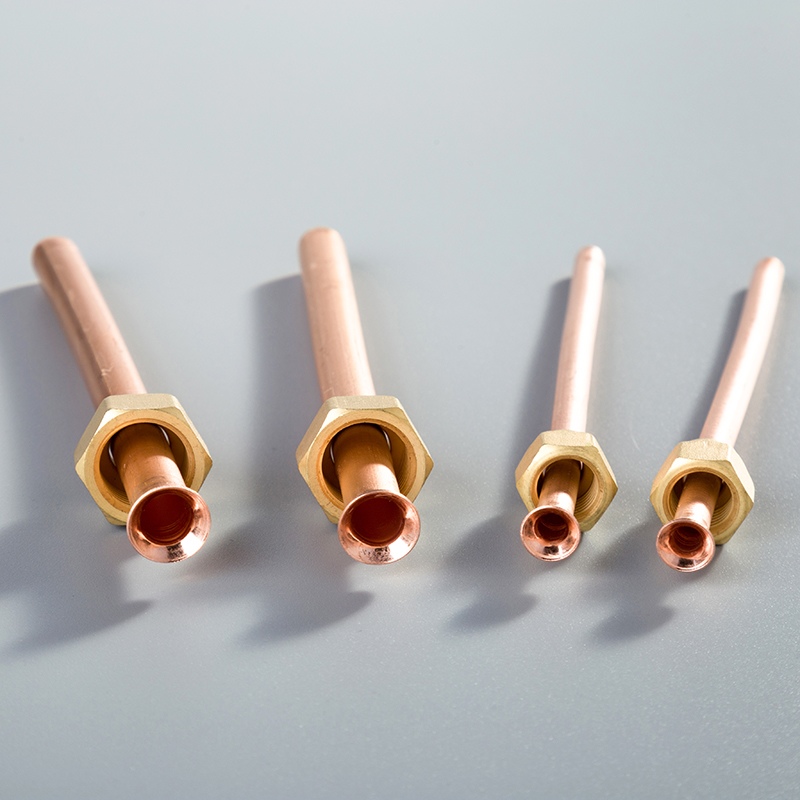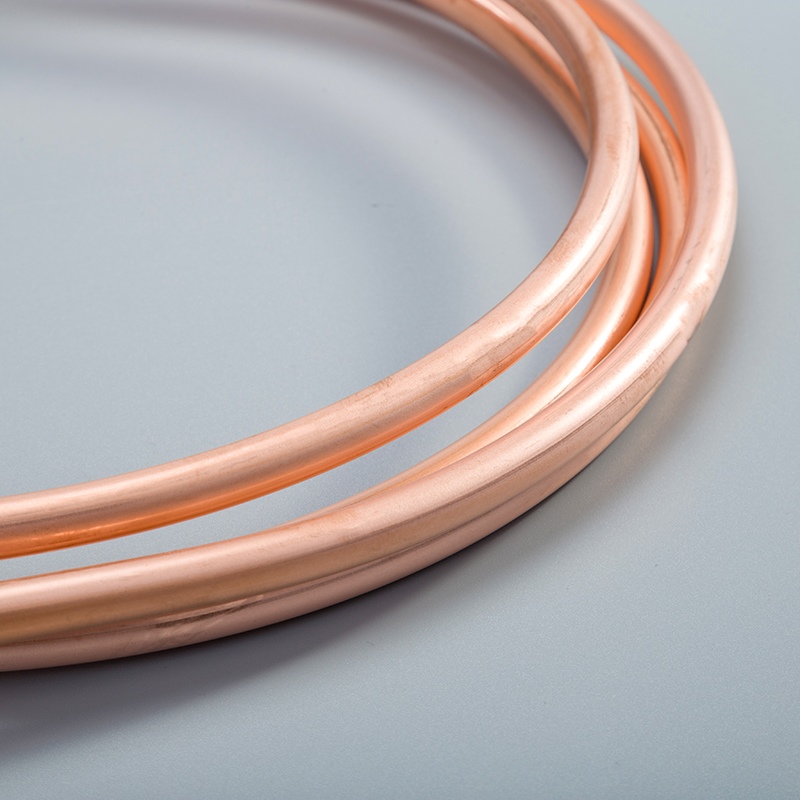The Importance of Quality Control in Copper Pipe Production

Copper pipe production is a vital industry due to the increasing demand across various sectors such as construction, heating, plumbing, and industrial applications. These pipes are not only versatile but also environmentally friendly, aligning with sustainable development goals. Technological advancements in manufacturing methods like rolling, extrusion, and casting have further improved the quality of copper pipes. It is essential to evaluate the significance of quality control standards in the production of 1/4 3/8 twin copper pipe. Quality control in manufacturing plays a crucial role in waste reduction, defect elimination, and continuous improvement to ensure high standards are maintained throughout the production process.
The Role of Quality Control
To ensure the mechanical strength of copper pipes, rigorous testing methods are employed throughout the production process. These methods involve assessing the tensile strength, hardness, and ductility of the pipes to guarantee they meet industry standards. By conducting tests at various stages, manufacturers can identify any potential weaknesses early on and take corrective actions to maintain the desired mechanical properties.
The importance of mechanical strength in copper pipe production cannot be overstated. Pipes with inadequate strength may be prone to leaks, cracks, or failures under pressure, leading to costly repairs and potential safety hazards. Quality control measures that focus on enhancing mechanical strength contribute to the overall reliability and longevity of copper pipes in different applications.
Preventing hydraulic damages is another critical aspect of quality control in copper pipe manufacturing. Through advanced inspection techniques, manufacturers can detect imperfections such as surface irregularities, internal defects, or corrosion that could compromise the pipes' hydraulic performance. By identifying these issues early on, companies can prevent leaks or system failures that may result from hydraulic damages.
Real-world case studies serve as valuable examples of how effective quality control practices can mitigate risks and ensure product integrity. By analyzing past incidents where quality control standards were not met, manufacturers can learn from mistakes and implement preventive measures to avoid similar issues in the future. These case studies highlight the direct impact of quality control on product quality and customer satisfaction.
Evaluating the significance of quality control standards in the production of 1/4 3/8 twin copper pipe involves adhering to specific guidelines and regulations set by industry authorities. These specific standards outline requirements related to material composition, dimensional accuracy, and performance characteristics specific to twin copper pipes. Compliance with these standards not only ensures product consistency but also enhances overall production efficiency.
Maintaining high-quality standards through effective quality control practices positively impacts production processes by reducing waste, minimizing rework, and optimizing resource utilization. The impact on production efficiency is evident when companies prioritize quality control measures as an integral part of their operations. By investing in quality assurance programs and continuous improvement initiatives, manufacturers can streamline their processes and deliver superior products consistently.
Quality Control Standards

In the realm of copper pipe production, adherence to Indian Government Regulations is paramount. The Overview of Regulations encompasses a comprehensive framework aimed at enhancing quality standards and promoting domestic manufacturing. Under the Drums and Tins (Quality Control) Order, 2023, strict guidelines govern the production, sale, trade, import, and stocking of items within its purview. This order serves as a cornerstone in reducing the influx of sub-standard goods into the market while fostering a conducive environment for local manufacturers to thrive.
The implications of these regulations are far-reaching. By imposing stringent measures on various aspects of production and distribution, the government ensures that only products meeting specified quality benchmarks reach consumers. The Copper Products (Quality Control) Order, 2023 stands as a testament to the commitment to safeguarding excellence in copper products. Notably, items falling under this order must bear the prestigious Bureau of Indian Standards (BIS) mark as a seal of approval attesting to their adherence to stringent quality standards.
On an international scale, Key Standards play a pivotal role in harmonizing quality control practices across borders. These standards serve as guiding principles for manufacturers worldwide, facilitating consistency and interoperability in product quality. Compliance with these key standards not only elevates the reputation of manufacturers but also opens doors to global markets by ensuring that products meet universally recognized quality benchmarks.
The benefits stemming from aligning with international standards are multifaceted. Manufacturers gain access to broader markets by demonstrating compliance with globally accepted norms. Moreover, adhering to these standards instills confidence in consumers regarding product reliability and safety. By embracing international quality control standards, companies position themselves as industry leaders committed to delivering top-notch products that meet or exceed customer expectations.
Technologies in Quality Control

Modern Testing Technologies
In the realm of copper pipe production, modern testing technologies play a pivotal role in ensuring product quality and consistency. One cutting-edge method that has gained prominence is Eddy Current Testing. This non-destructive technique allows manufacturers to assess the integrity of copper pipes by detecting surface and subsurface defects with high accuracy. By utilizing electromagnetic induction, Eddy Current Testing can identify flaws such as cracks, corrosion, or variations in material properties without causing any damage to the pipes.
Implementing Eddy Current Testing in quality control processes offers several advantages. Firstly, this method enables rapid inspection of large volumes of copper tubes, enhancing production efficiency while maintaining stringent quality standards. Secondly, the real-time feedback provided by Eddy Current Testing allows manufacturers to promptly address any issues that may arise during the manufacturing process, minimizing waste and rework. Lastly, the non-invasive nature of this testing technique ensures that the structural integrity of copper pipes remains uncompromised.
Apart from Eddy Current Testing, manufacturers are exploring other advanced methods to further enhance quality control in copper pipe production. These methods encompass a range of innovative technologies such as laser scanning, ultrasonic testing, and automated visual inspection systems. Laser scanning technology enables precise dimensional measurements of copper tubes, ensuring compliance with specified tolerances and geometrical requirements. Ultrasonic testing is utilized to detect internal defects or discontinuities within the material structure, providing valuable insights into the overall quality of the pipes.
Automation in Quality Control
Automation has revolutionized quality control practices in various industries, including copper pipe manufacturing. The adoption of automated systems offers numerous benefits that streamline production processes and elevate product quality. One key advantage of automation is its ability to enhance inspection accuracy and repeatability by reducing human error and variability. Automated inspection systems can perform detailed assessments of copper tubes with unmatched precision, ensuring that all quality parameters are met consistently.
The benefits of automation extend beyond improved inspection capabilities. By integrating automated quality control systems into their operations, manufacturers can achieve higher throughput rates without compromising on accuracy or reliability. This increased efficiency translates into cost savings and enhanced competitiveness in the market. Moreover, automation minimizes manual intervention in quality control processes, freeing up personnel to focus on more strategic tasks that drive innovation and continuous improvement.
Several examples illustrate the successful implementation of automated systems in copper pipe production facilities worldwide. A notable case study involves a UK-based manufacturer who deployed an automated quality control system to optimize their tubing manufacturing process. Through rigorous testing and calibration procedures, the company established precise parameters for assessing tube variations while accounting for environmental factors like glare or reflection that could impact image inspection results.
Investing in quality control measures is paramount for ensuring the reliability and safety of copper pipes. By adhering to stringent standards and leveraging advanced testing technologies, manufacturers can uphold product integrity and meet industry demands. The future of quality control in copper pipe production looks promising, with the construction sector's growth driving the increasing demand for these environmentally friendly materials. This presents attractive prospects for manufacturers and investors willing to capitalize on this thriving industry.
See Also
Exploring the Quality Assurance Techniques for Copper Tubing Production
Achieving Excellence in Copper Tubing Quality Control
Innovative Approaches to Ensuring Copper Tubing Quality


